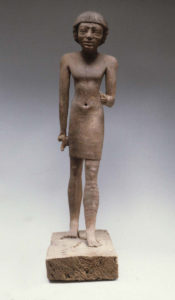
Title: Statue of Tjeteti as a young man
Artist: Unknown
Period: Old Kingdom; ca. 2200–2152 B.C.
Museum: The MET
In the Old Kingdom, the artwork was much more abstracted, with larger eyes and hands. The body is not as emphasized; in other words lacking muscles. They used the eyes and hands as religious symbols (supplication).
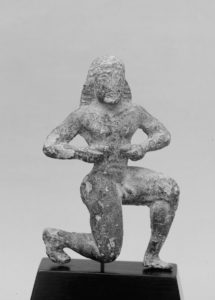
Title: Bronze youth
Artist: Unknown
Period: Archaic; 6th century B.C.
Museum: The MET
This figurine shows the beginning of the importance to the body, but it is still very abstracted. This figure depicts much more motion and versatile perspectives, allowing the viewer to see the full body.
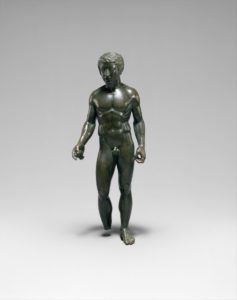
Title: Bronze youth
Artist: Unknown
Period: Classical; late 5th century B.C
Museum: The MET
Already from one century to the next the body becomes much more muscularized, and idealized. This shows the shift of a God-centered society into a humanism based civilization.
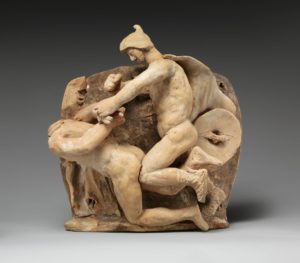
Title: Terracotta relief probably from a funnel vase
Artist: Unknown
Period: Early Hellenistic; late 3rd–early 2nd century B.C
Museum: The MET
This statue also shows the importance of the body using two nude males, one most likely a Gaul and the other Greek, fighting. This fight combats the idea of the essence of Greek humanism; the struggle and dominance of man, especially the civilized greek.
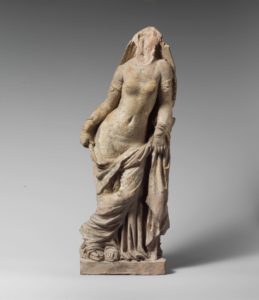
Title: Terracotta statuette of a veiled woman
Artist: Unknown
Period: Hellenistic; 2nd century B.C.
Museum: The MET
The importance of realistic body, with idealized anatomy, extends to much more than just the man. The woman is also used to show the beauty of the body and shows the parallel between humanism and the distorted (even if idealized) body.
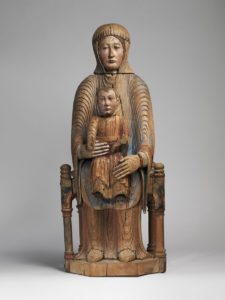
Artist: Unknown
Period: ca. 1175–1200
Museum: The MET
The shift of humanism towards a God shift society results in the abstracted form of the human body. Rather than alluding to the earthly, the heavenly is referenced through the abstract.

Title: Christ Enthroned
Artist: Unknown
Period: ca. 1230
Museum: The MET
This statue is to reiterate the shift religious status, resulting in abstracted human forms to allude to the heavenly. In other words when God is the center of civilization the body image is no longer realistic or idealized, but almost despised and forgotten.


